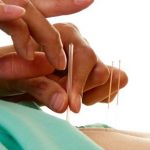How to Tell the Difference Between Nummular Eczema and Ringworm
It’s often difficult to distinguish between nummular eczema and ringworm, so it’s always best to be evaluated by a dermatologist, say experts.

Published On: Jun 1, 2016
Last Updated On: Jul 15, 2021
Atopic dermatitis (AD) is a chronic itchy inflammatory disease that affects a large number of children and adults.1 The suffering is not limited to the skin; patients have increased rates of ADHD, depression, and anxiety.2 The most cutting- edge theories suggest that having eczema on skin may directly lead to the development of systemic food allergies as well.3 This “leaky skin” concept means that treatment of this condition is essential.
Fortunately, we have at our disposal an impressive array of treatments that give most patients excellent relief. Unfortunately, however, there is a group of patients that is not well-served by these treatments: side effects, other existing conditions, personal preference, and even the fear of side effects can sometimes be insurmountable obstacles.4 For some patients, it may be in their best interest to consider an integrative approach to treating atopic dermatitis.
 Integrative medicine is a form of medicine that aims to marry conventional, evidence-based treatments with those that are perhaps less conventional and may not have widespread agreement among all physicians and healthcare practitioners, sometimes called “alternative” or “complementary” medicine.5 Beyond this, however, the ideals behind integrative medicine are not only to address the medical issues, but also to include the emotional, social, and spiritual aspects of a patient’s life.6 There has been a great deal of focus on the use of alternative therapies to treat conditions such as atopic dermatitis, which is often found to be resistant to conventional treatments, has no cure, and continues to defy easy explanation. Studies have indicated that roughly half of all patients with atopic dermatitis have tried at least one form of alternative medicine.7 Thus, it is beneficial to know at least a little about these treatment options.
Integrative medicine is a form of medicine that aims to marry conventional, evidence-based treatments with those that are perhaps less conventional and may not have widespread agreement among all physicians and healthcare practitioners, sometimes called “alternative” or “complementary” medicine.5 Beyond this, however, the ideals behind integrative medicine are not only to address the medical issues, but also to include the emotional, social, and spiritual aspects of a patient’s life.6 There has been a great deal of focus on the use of alternative therapies to treat conditions such as atopic dermatitis, which is often found to be resistant to conventional treatments, has no cure, and continues to defy easy explanation. Studies have indicated that roughly half of all patients with atopic dermatitis have tried at least one form of alternative medicine.7 Thus, it is beneficial to know at least a little about these treatment options.
In this article, we will touch upon some conventional and alternative therapeutic options that can be used for patients with atopic dermatitis.
The conventional treatment of atopic dermatitis includes a multi-targeted approach that aims to enhance the barrier function of the skin as well as to reduce inflammation and itch. Additional steps would be to avoid factors that trigger flare-ups and decrease bacterial colonization. These include contact allergens, detergents, and extreme temperatures.8
A primary goal of treating atopic dermatitis is to maintain adequate skin moisture. This can be addressed by the use of moisturizers. Generally, fragrance-free moisturizers with few ingredients are preferred in order to minimize allergic sensitization. Lotions, creams, and ointments may all be used, although ointments tend to have a higher lipid content which appear to lead to a more effective barrier.8 Studies have demonstrated that the use of moisturizers decreases the need for topical steroids in infants with atopic dermatitis.9 Perhaps the most exciting evidence suggest that early use of moisturizers can actually prevent the development of atopic in high-risk populations. 10–11
Topical steroids remain the mainstay of treatment for atopic, for better or for worse.12 While they have a rapid and powerful effect on atopic dermatitis, prolonged use can lead to numerous side effects including skin atrophy, pigmentation changes, and even topical steroid withdrawal.13 Increasing recognition of these adverse effects has led to the widespread problem of corticosteroid phobia, which may also contribute to the desire for more integrative approaches.14
The non-steroidal topical calcineurin inhibitor tacrolimus has been shown to approximate moderate topical steroids in its anti-inflammatory effect, and can be used instead of steroids or as a complement when needed.15 Studies have indicated that application of steroids or calcineurin inhibitors to skin previously involved with atopic dermatitis may decrease future flares, and such “proactive therapy” is ideal, although can be more difficult for the patients to keep up over time.16
Patients with more severe disease may not respond to the above treatments, even when leveraged with powerful techniques such as “wet wrapping” and “soak and smear”.17, 18 In these situations, phototherapy, particularly with narrow band UVB, is a possible therapeutic alternative that is relatively safe and can stave o the need for more potent systemic agents.19
If all of the above treatment options fail, patients may require systemic immunosuppressants such as cyclosporin. While off-label for atopic dermatitis, studies have demonstrated that 6-8 weeks of treatment with cyclosporine results in a roughly 50% decrease in the mean disease severity of atopic,20 providing much-needed relief and a chance to heal and recover. However, these are not curative: stopping the medications results in relapse.21
While there is currently great enthusiasm about the pipeline of upcoming medications for atopic dermatitis, some of these medications may be years away, and others may become held up during the process of development; it is not feasible to simply tell patients who are suffering to wait until we have something better.
Moisturizing oils are commonly used in the treatment of atopic dermatitis, and those that are plant-based have a place in alternative medicine. Sunflower seed oil has been found to be desirable since it is able to induce the production of natural ceramides.22 It also serves the additional benefit of directly enhancing the skin barrier and decreasing inflammation in the skin.23
Coconut oil is another natural oil that can be used to combat atopic dermatitis. In addition to serving as a moisturizer, it also possesses antimicrobial properties. One study demonstrated a 95% reduction in staph in atopic dermatitis patients compared with only 50% reduction in a control group.24
This is highly promising given that the skin of atopic dermatitis patients is colonized by a greater abundance of Staphylococcus aureus than healthy patients and may be playing a very direct role in driving inflammation.25–26
 Acupuncture has the potential to alleviate the itch associated with AD. Studies have demonstrated that acupuncture can reduce hive-like itch reactions,27 and acupressure applied to the Large Intestine 11 point was also shown to significantly reduce itch.28 Although the effect is generally modest, there may be a role for acupuncture or acupressure in some patients.
Acupuncture has the potential to alleviate the itch associated with AD. Studies have demonstrated that acupuncture can reduce hive-like itch reactions,27 and acupressure applied to the Large Intestine 11 point was also shown to significantly reduce itch.28 Although the effect is generally modest, there may be a role for acupuncture or acupressure in some patients.
It has been hypothesized that stress-reducing methods such as hypnosis, massage, and relaxation therapies, could provide benefit to atopic dermatitis patients.29 Stress has been implicated in weakening the barrier function of the skin in healthy individuals, and delaying skin healing in patients with atopic dermatitis.30 One study demonstrated 10 of 12 children had decreased itching and scratching 18 months after hypnotherapy treatment. These patients also had improved mood and sleep.31 Additionally, one study found that interventions geared towards reducing stress levels in patients with atopic dermatitis were associated with significantly less itching.32
Integration
Conventional medicine is often effective treating atopic dermatitis but does not always completely alleviate symptoms. The use of medications such as steroids may make patients feel uncomfortable or lead to long term side effects. In such cases, considering alternative and complementary approaches and thinking about the patient more holistically may allow for a truly integrative approach.
Often this can mean a trial of phototherapy while using sunflower and coconut oils to help moisturize and decrease staphylococcal colonization, or identifying a patient who reports flaring with stress and encouraging a trial of a stress-relieving behavioral approach in addition to soak and smear. It can even mean using acupressure as an adjunct to systemic methotrexate or cyclosporine.
Arguably, good clinicians do this naturally, at least to some extent: listening and adapting to the patient’s concerns is at the heart of the patient-doctor relationship. Sometimes just bringing up these ideas may prove to be of great value for those unresponsive to or unwilling to consider the conventional approach. And, sometimes, that tiny connection can open the door to much greater understanding.
Adapted with permission, from Practical Dermatology.
 Fatima Lakhani is a medical student at the Northwestern University Feinberg School of Medicine. She graduated from the University of Florida with bachelor degrees in Biology and Psychology in 2015.
Fatima Lakhani is a medical student at the Northwestern University Feinberg School of Medicine. She graduated from the University of Florida with bachelor degrees in Biology and Psychology in 2015.
 Peter A. Lio, M.D. is Assistant Professor of Clinical Dermatology and Pediatrics-Dermatology at Northwestern University Feinberg School of Medicine and Director of the Chicago Integrative Eczema Center. Dr. Lio is also a member of the National Eczema Association Scientific Advisory Committee.
Peter A. Lio, M.D. is Assistant Professor of Clinical Dermatology and Pediatrics-Dermatology at Northwestern University Feinberg School of Medicine and Director of the Chicago Integrative Eczema Center. Dr. Lio is also a member of the National Eczema Association Scientific Advisory Committee.
References